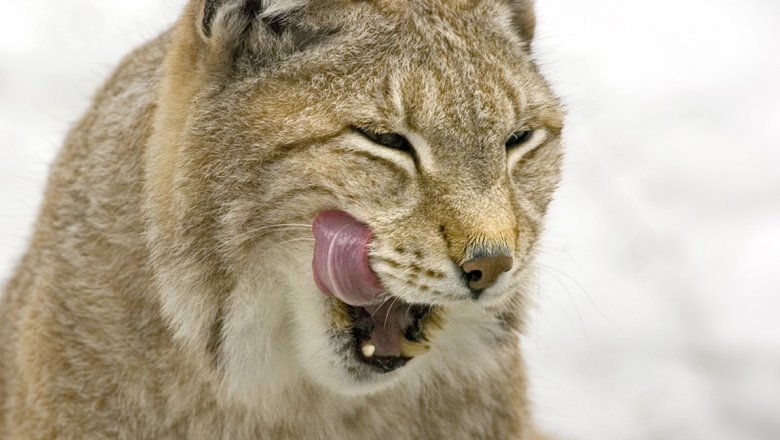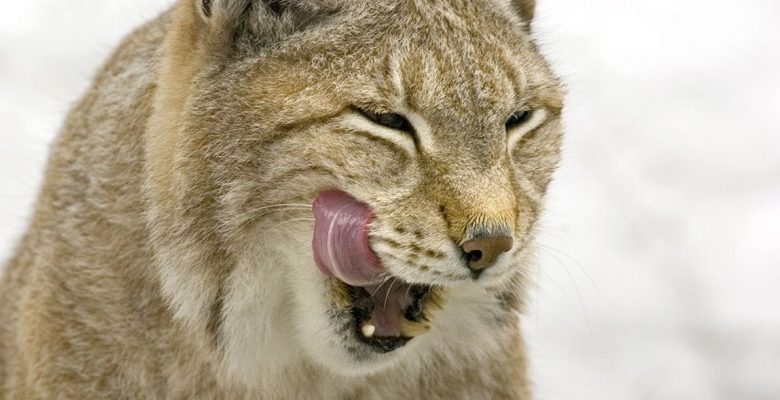
Imagine you’re a lynx for a moment. You’re not just wandering around aimlessly; you have specific needs, like staying energized and finding a meal. The way lynx hunt and what they eat plays a crucial role in their survival. So, let’s dive into the skinny on what makes a lynx a successful predator—from its diet to its cunning hunting tactics.
The Lynx Diet: A Closer Look
Lynx are carnivorous animals, meaning they primarily eat meat. Their diet is pretty diverse, but it often focuses on small to medium-sized prey. You might think of them as picky eaters, but in reality, they adapt to whatever is available in their environment. For instance, **snowshoe hares** make up a significant portion of a lynx’s meals. This isn’t just a coincidence; it’s a classic predator-prey relationship.
Hares are plentiful in the lynx’s habitat, and these cats have evolved to be perfectly suited for hunting them. When the hare population dips, lynx will switch to other animals like **squirrels**, **birds**, or even **rodents**. It’s fascinating how these cats can read the patterns of nature to survive.
Lynx will also eat larger animals when necessary, like **young deer**, especially in the winter months when food is scarce. During this time, the cats need to conserve energy while hunting, so they’ll choose bigger prey that can give them more calories. Here’s the thing: their diet is not just about survival; it’s about finding the right balance in a challenging environment.
Hunting Techniques of the Lynx
When it comes to hunting, lynx are skilled and strategic. Imagine a game of chess—but instead of pawns and rooks, it’s all about stealth and speed. Lynx employ several techniques to catch their prey. One of their main strategies is **stalking**. They move silently through the underbrush, using their keen eyesight to spot potential meals.
Lynx have a unique hunting style that involves freezing in place and waiting for the perfect moment to pounce. This patience is crucial, especially when hunting quick prey like hares. They blend seamlessly into their surroundings, thanks to their thick fur and mottled coat, which offers fantastic camouflage.
Another tactic they use is **ambush hunting**. From a hidden spot, a lynx will observe its surroundings for signs of movement. Once it spots an unsuspecting animal, it will launch a quick and powerful attack. This is where their excellent hearing and agility come into play, helping them make those split-second decisions that can mean the difference between a successful hunt and going home empty-pawed.
The Importance of Camouflage
One of the most ingenious aspects of a lynx’s hunting strategy is its natural camouflage. The thick, spotted fur of the lynx helps it blend into the varied landscapes of its habitat. When you think about a snowy forest, having a coat that mimics the dappled light filtering through the trees is a major advantage.
In the summer months, when the forest floor is lush and green, their coat takes on a slightly different hue, blending in with the shadowy undergrowth. This **adaptive coloration** is a crucial part of what makes them effective hunters. It’s almost like nature’s own version of a stealth suit!
This ability to remain unseen while moving through their environment means lynx can stalk prey without being detected. It’s a beautiful dance of nature, where both predator and prey engage in a sophisticated game of hide-and-seek.
Seasonal Variations in Diet and Hunting
As seasons change, so too does the diet of the lynx. During winter, snow covers the ground, and hunting becomes more challenging. Think of it as a game of survival where the stakes are higher. Lynx rely heavily on snowshoe hares during this time. But as the temperature rises in the spring and summer, their prey options shift dramatically.
In warmer months, they diversify their diet more, actively hunting for **birds** and **small mammals**. The lush environment provides them with more food options, making it easier to satisfy their hunger. You might say that the lynx’s adaptability allows it to thrive no matter the season.
Moreover, the change in hunting tactics is equally fascinating. In winter, the lynx may use the snow to its advantage, leaping on snowdrifts to pounce on unsuspecting prey below. However, in summer, they’ll rely more on their speed and agility to chase down birds or capture faster animals.
Geographic Influence on Hunting Strategies
The hunting strategies of lynx can vary significantly depending on where they live. In **North America**, for instance, the **Canada lynx** often hunts in dense forests filled with snow. It relies on its ability to move swiftly through deep snow, thanks to its large, furry paws that act like snowshoes.
On the other hand, the **Eurasian lynx** has a more varied habitat, ranging from mountain ranges to wooded areas. This versatility affects how they hunt and what they eat. For example, in mountainous regions, these lynx may employ more climbing and jumping behaviors to catch prey, showcasing their remarkable physical abilities.
This geographic adaptability emphasizes the lynx’s role in maintaining the health of its ecosystem, as it helps keep prey populations in check.
Conservation and the Future of Lynx Diet and Hunting
As with many wildlife species, the future of lynx—and their hunting strategies—is under threat due to habitat loss and climate change. Imagine trying to hunt in an area that’s shrinking or changing rapidly. It’s tough. Lynx are very much affected by these changes, as both their prey and habitats are impacted.
Conservation efforts are crucial for maintaining healthy populations of lynx and ensuring they can adapt to changing environments. By protecting their habitats, we’re also safeguarding their ability to hunt effectively and maintain the balance of their ecosystems.
It’s a bit like tending to a garden. Without proper care, certain plants might die off, which can impact the whole ecosystem. Supporting conservation initiatives ensures that future generations can enjoy the beauty of lynx in the wild, thriving in their natural homes.
In summary, the diet and hunting strategies of the lynx are intricate and beautifully adapted to their environments. Understanding these aspects not only highlights their role in the ecosystem but also emphasizes the importance of protecting these remarkable creatures and their habitats for years to come.

